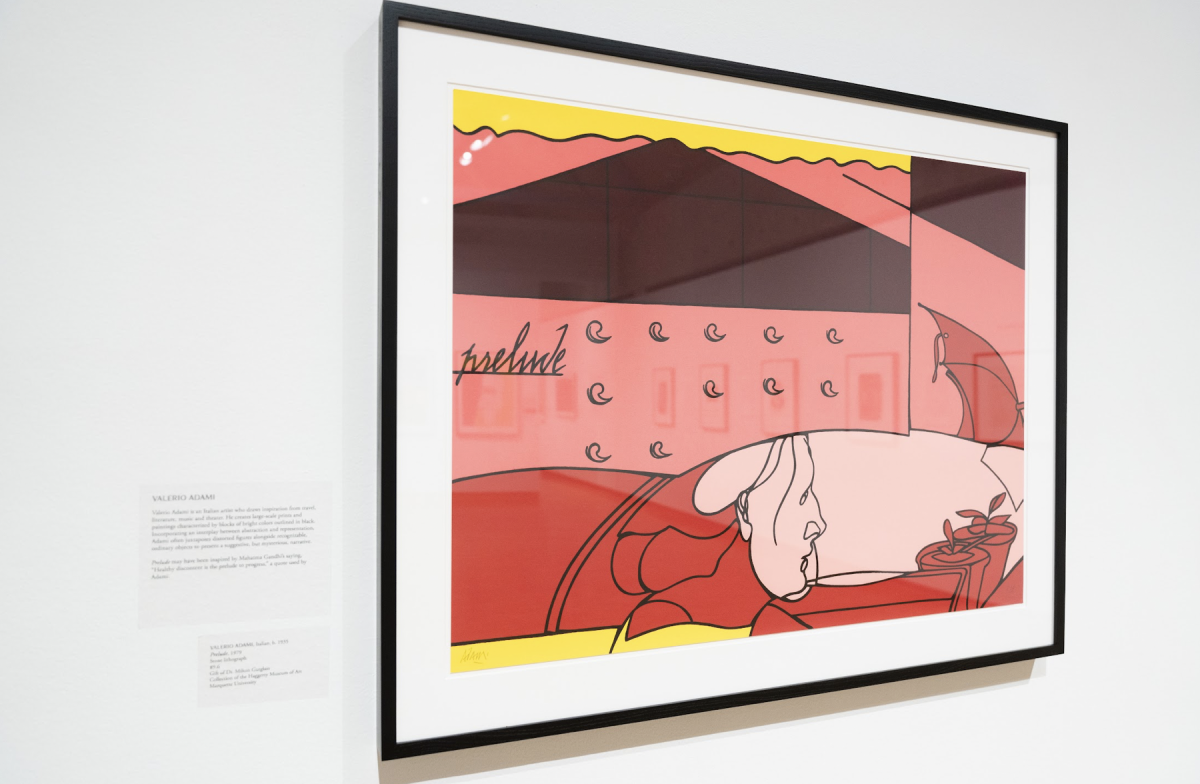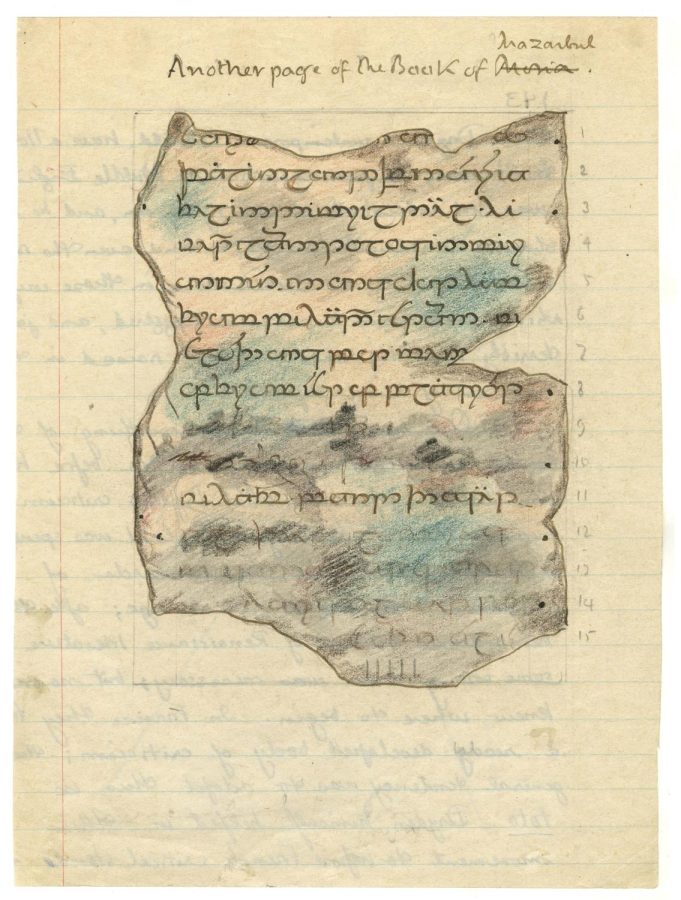“Love You To Death: Discontented Desire,” the Haggerty Museum of Art’s new exhibition running until Dec.23, examines the positive and negative varieties of human desires.
Lynne Shumow, the curator for academic engagement at the Haggerty Museum of Art worked with Rev. Ryan Duns, Jesuit and associate professor of theology, over the course of six months to hand-pick art for this exhibit. The pieces were taken from the Haggerty’s 10,000 piece collection.
At first glance, on the four walls when walking into the exhibit is unique art from three different artists. Pieces from Italian artist Valerio Adami, as well as pieces from British artist Richard Lindner art series are on display. However, the majority of the exhibit’s art comes from Michael Rothenstein’s color screen prints on paper: “Song of Songs.”
Duns said the Rothenstein series is an artistic depiction that is inspired by the love poetry of the “Song of Songs.” In these biblical poems two lovers are speaking to each other with admiration and taking in each other’s beauty. Solomon’s “Song of Songs” has inspired commentaries for generations as it is noteworthy the only part of scripture that does not mention God, Duns explained.
Duns said he asked his students in his Theology Contemplation and Action to practice contemplative belonging and examine the same piece of art over the course of 10 times throughout the semester. Each time his students are asked to sit in front of a piece of art from the exhibit for 20 minutes and then write a reflection on what they see in the art.
“By contemplative beholding, I mean the intentional practice of bringing yourself before the artwork in a way that allows the art to reveal itself on its terms, rather than you impose yourself on it,” Duns said.
Duns said contemplative belonging allows students in his class to see how the world around them can influence their life and their own self-perceptions. Fads, trends and the desire for “stuff” Duns uses as examples of how the outside world can dictate what it is we desire.
“Students begin to see themselves as beholders. How they show up to the Haggerty, what happened that day changes how they perceive the art. I’m trying to get them to see how the world around us shapes what gets into us,” Duns said.
Although this art exhibit was curated with the intention of being used for Dun’s theology class, Shumow explains that anyone can appreciate and be open to the reflection this exhibit creates for its viewers.
“It’s hopefully something all people can get something out of and the general audience can appreciate the aesthetics of the pieces,” Shumow said.
Desire for love is seen in Adami’s piece while Lindner shoot series as well as most of his art, focuses on capturing corrupt aspects of society as explained on the plaque near his art in the exhibit. The art on display ranges in its use of colors, while also having artists ranging from Italian, British and German.
By visiting this exhibit, Shumow and Duns said they hope the viewer has the chance to reflect on what it is they truly desire and want out of life. Duns said he encourages all who view the exhibit to practice contemplative beholding and not simply look and pass by the art, but instead behold it.
“If you walk in and look, you fail the exhibit. You have to stop and learn to behold it, take it all in,” Duns said.
This story was written by Avery Darrow. She can be reached at avery.darrow@marquette.edu.










